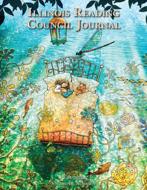 |
Check This Out: eBooks in the Screen Age
By Marie Ann Donovan and Mary Yockey
Document: Column
Introductory Paragraph: We originally were inspired to write this column some months ago. We saw how our library and classroom colleagues were grappling in late fall with the publishing industry’s emerging, revolutionary models for pricing ebooks. These models were taking even bigger bites out of school budgets, calling into question the status quo of libraries’ missions and practices. While finalizing our previous draft’s observations and recommendations for incorporating ebooks into your school and classroom libraries, karma—in the form of a pandemic—stepped in. What we had researched and vetted over time became irrelevant or inaccurate within a couple of weeks. O tempora o mores! Like you, our ways of thinking about our work have been upended. We appreciate how another ancient adage, “the only way out is through,” has never been truer. The main way we have been “getting through” is by turning to the cloud. We are ever more dependent upon technology-mediated means for achieving daily goals—personal and professional. Yet, as the world shifted to the cloud, the cloud repositioned itself. Companies whose business models previously included online products and services in their mix continued reworking them to be predominantly, if not exclusively, digital. We see this most obviously in the school, or elhi, sector of the publishing industry. Smaller houses as well as the conglomerates recognize what futurists predicted decades ago: The 21st century is the Fully Electronic Information Age. We educators were uniquely situated to sense this evolution would occur. We were planning and acting accordingly, preparing students for their mainly online tomorrow (Moran, 2019). The pandemic hurried this evolution. Everyone’s realizing we have arrived full-bore into this Age. The implication of these shifts is deep: ebooks are now considered essential resources. The term ebooks is used to label trade books converted or written for reading on an electronic device. Though marketed to schools, they also are available to the consumer market through a variety of sources, including straight from their publishers. Since e-textbooks are their own, separate entities in terms of design and are purchased for use in classroom instructional programs rather than libraries, we are focusing here on ebooks. Even so, many of the access, affordability, selection, and use elements we highlight might also apply to your e-textbook program.
DOI: https://doi.org/10.33600/IRCJ.48.4.2020.47
Page Numbers: 47-53
|


